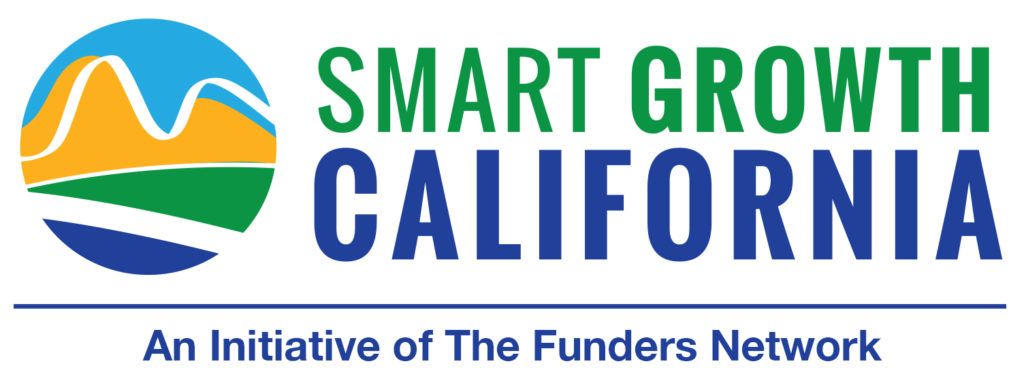The Best Complete Streets Policies of 2015
This report is a yearly analysis of newly passed Complete Streets policies, including recognition of the country’s most comprehensive ones.
READ MORE >March 2016
Smart Growth America; National Complete Streets Coalition
public health, transportation, walking and bicycling
Stalled Out: How Empty Parking Spaces Diminish Neighborhood Affordability
This report explores the relationship between unused parking and neighborhood affordability. Minimum parking requirements don’t always reflect real demand, and as parking supply goes up, much of it sits empty — at great opportunity cost.
READ MORE >March 2016
Center for Neighborhood Technology
transit-oriented development
The Consumer Impacts of California’s Low-Carbon Transportation Policies
This report looks at the cumulative impact of California’s climate policies on household transportation costs. It finds that even after accounting for industry compliance costs, California households are projected to save up to $1,500 annually by 2030 thanks to lower annual fuel bills, with low-income households experiencing the largest savings (as a share of income).
READ MORE >March 2016
Consumers Union
climate change, economic opportunity, social justice, transportation
Inclusionary Zoning Has a Scale Problem
This analysis looks at how inclusionary zoning isn’t coming close to meeting the demand for below-market housing nor will it ever be able to do so.
READ MORE >February 2016
CityObservatory
affordable housing
Perspectives on Helping Low-Income Californians Afford Housing
This report follows up on a previous report on the causes and consequences of California’s housing shortage. It states that given the scope of the problem, the only way to stem displacement on a large scale is to significantly increase the amount of new housing that gets built in California’s desirable coastal communities.
READ MORE >February 2016
Legislative Analyst's Office
affordable housing
Integrating California’s Climate Change and Fiscal Goals: The Known, the Unknown, and the Possible
This award-winning paper argues that tax reform could also be a tool for improving climate incentives for development. One of Chapple’s proposals for reform is to increase the amount of property tax revenue returned to the municipalities based on their performance in building infill and transit-oriented development.
READ MORE >February 2016
Karen Chapple, Ph.D.
climate change, transit-oriented development
How to Make Expensive Cities Affordable for Everyone
This piece looks at the question of how we can make room in highly desirable cities for everyone. Economists, sociologists, and land use scholars weigh in on the debate about the impact of housing supply and demand.
READ MORE >February 2016
The Washington Post: Wonkblog
affordable housing, gentrification and displacement
The Distressed Communities Index
This analysis includes an interactive heat map and analysis for identifying, visualizing, and evaluating economic prosperity and distress spanning nearly every community throughout the country. The “Distressed Communities Index” was built using data from more than 25,000 zip codes and covers 312 million Americans, or 99 percent of the population.
READ MORE >February 2016
Economic Innovation Group
economic opportunity, gentrification and displacement
Half the Oil: Pathways to Reduce Petroleum Use on the West Coast
This report shows how Washington, Oregon, and California could cut their petroleum use in half by 2030.
READ MORE >February 2016
Union of Concerned Scientists
clean energy, climate change
Sustainable Communities Strategies and Conservation: Results from the First Round and Policy Recommendations for Future Rounds
This report looks at how conservation strategies can help avoid sprawl to achieve the greenhouse gas targets and land use goals related to SB 375. The report also showcases conservation best practices in current transportation plans.
READ MORE >January 2016
The Nature Conservancy and Sequoia Riverlands Trust
climate change, open space and parks, transportation
First and Last Mile Connections: New Mobility
This case study examines best practices for new mobility strategies, programs, and models that benefit vulnerable populations. Shared mobility consists of short-term transportation solutions that enable users to access various shared vehicles, bicycles, or other low-speed modes.
READ MORE >January 2016
NRDC
social justice, transportation
Twelve Innovations in State Transportation Policy States Should Consider in 2016
This report outlines 12 state transportation policy solutions either passed legislatively or instituted through administrative action that expand transparency and accountability, boost state and local economies, invest in innovation, save money, and improve safety for the traveling public.
READ MORE >January 2016
Transportation For America (T4America)
transportation
The Scenic Route: Getting Started with Creative Placemaking and Transportation
This online guide is a primer on how transportation infrastructure projects can be building blocks of economic development and can incorporate local arts, culture and heritage so that neighborhoods become distinct and unique places.
READ MORE >January 2016
Transportation For America (T4America)
community development, transportation
Framework for Creating a Smart Growth Economic Development Strategy: A Tool for Small Cities and Towns
This step-by-step guide helps small and mid-sized cities build a place-based economic development strategy.
READ MORE >January 2016
US Environmental Protection Agency
community development, economic opportunity
Does Urban Sprawl Hold Down Upward Mobility?
This study suggests that how sprawling or compact of a place you live in may have a significant impact on your chances to escape poverty.
READ MORE >January 2016
Journal of Landscape and Urban Planning
economic opportunity, social justice, transit-oriented development

